Fuji’s GF 30mm and 110mm Tilt/Shift Lenses Offer Control and Versatility
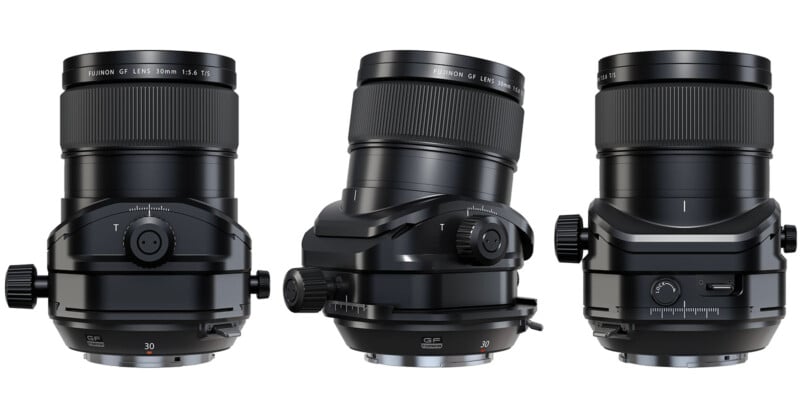
The GFX System’s highly anticipated pair of tilt-shift lenses are due to arrive in stores this autumn.
Update: An earlier version of the article’s headline referred to the GF 30mm f/5.6 T/S lens as a 24mm lens. It is equivalent to a 24mm lens but its actual focal length is 30mm.
The Fujinon GF 30mm f/5.6 T/S and Fujinon GF 110mm f/5.6 T/S Macro lenses are built for demanding professional photographers who require enhanced control over parallax, distortion, and focus.
“The introduction of tilt-shift lenses for GFX System opens doors for architectural, product, and commercial photographers to use a native G Mount lens for the first time with their GFX System cameras,” explains Victor Ha, vice president, Electronic Imaging and Optical Devices Divisions, Fujifilm North America Corporation. “This means that GFX System users will finally be able to achieve optimal image quality because these lenses are specifically designed to make the most of GFX System’s 55mm imaging sensor.”
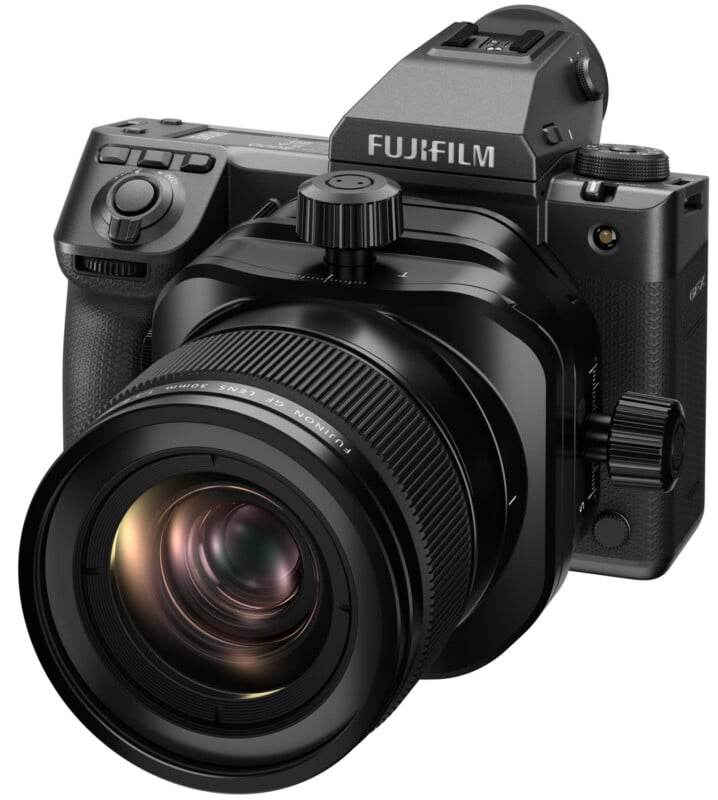
As a note, the “55mm imaging sensor” here refers to the diagonal measurement of the GFX System’s 43.8 x 32.9 millimeter image sensor.
Fujinon GF 30mm f/5.6 T/S
The GF 30mm f/5.6 T/S lens offers a 35mm-equivalent focal length of 24mm, making it ideal for landscape and architectural photography, as tilt and shift adjustments can be made based on a location’s specific requirements. Photographers can use the tilt and shift capabilities of the lens to keep vertical lines of buildings or trees straight in the frame.
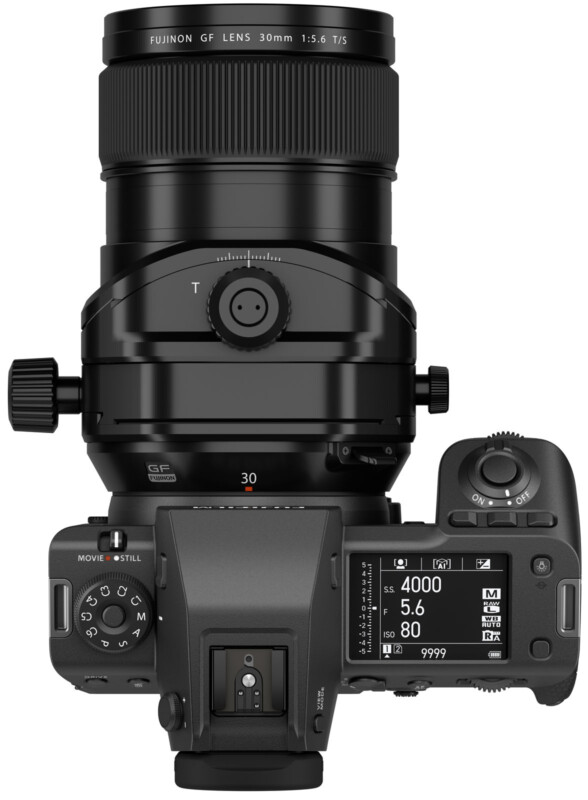
The GF 30mm f/5.6 T/S comprises 16 lens elements organized across 11 groups, including three aspherical elements, a pair of extra-low dispersion (ED) elements, and a single Super ED element.
Fujifilm says that the lens’ advanced optics are designed to eliminate the need for electronically correcting distortion and lateral chromatic aberration. Further, spherical aberration, comatic aberration, and field curvature are “suppressed” to achieve “edge-to-edge sharpness,” even during shifting. The lens also includes Fujifilm’s Nano GI coating technology to inhibit unnecessary light reflections to reduce ghosting and flare.
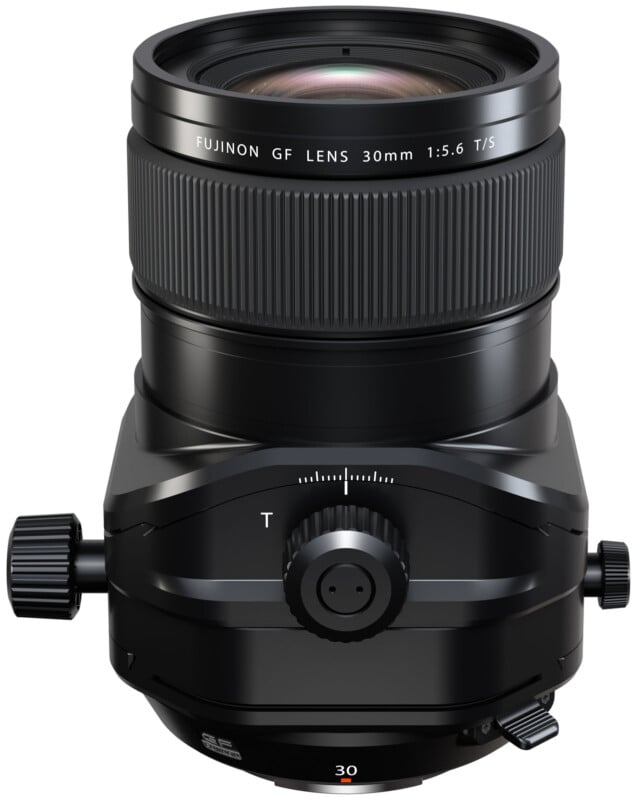
The GF 30mm f/5.6 T/S offers plus/minus 8.5 degrees of tilt and up to plus/minus 15mm of adjustment to the position of the focal plane and angle of perspective. “Rotation adjustments within plus/minus 90 degrees can also be combined with parallel or perpendicular tilt and shift adjustments, to give a high level of flexibility in accounting for the needs of the scene,” adds Fujifilm.
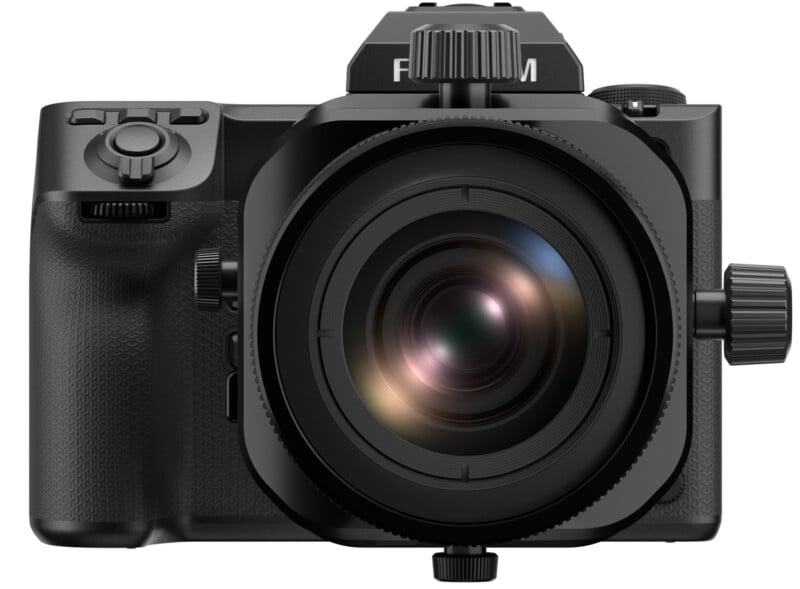
The lens includes a built-in sensor that measures changes in degrees to shift or rotation. These changes can be monitored in Live View and are recorded within photo metadata.
Weighing 2.95 pounds (1,340 grams), the GF 30mm f/5.6 T/S lens is pretty hefty. It is 5.5 inches (138.5 millimeters) long and includes a 105mm front filter thread. The lens has a total image circle of about 85mm in diameter.
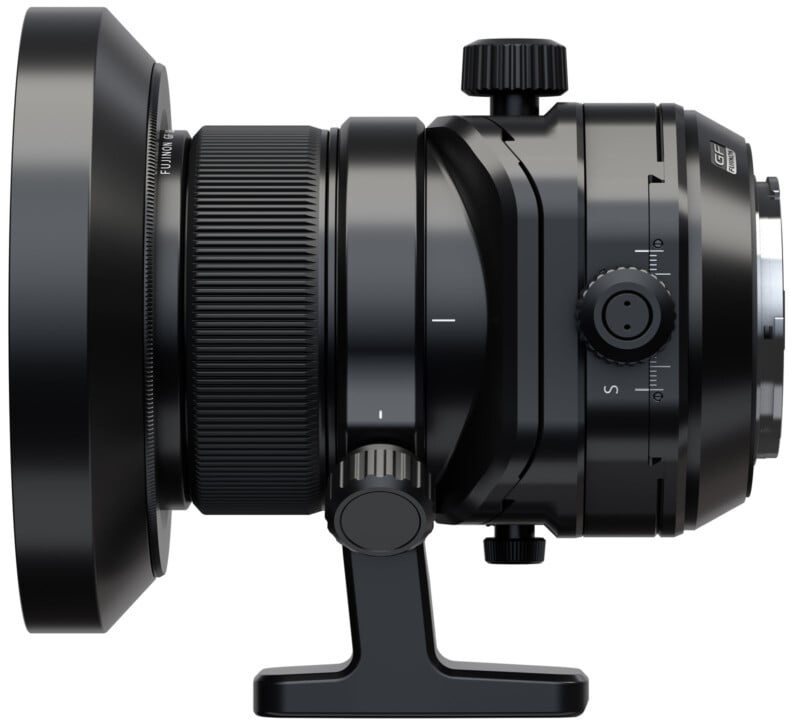
The lens includes a custom-designed tripod collar that helps maintain the subject’s position during shifting. The collar also helps prevent parallax, which can be troublesome when stitching multiple images together.
Arriving later this month, the GF 30mm f/5.6 T/S lens will cost $4,000.
GF 110mm f/5.6 T/S Macro
While the GF 30mm f/5.6 T/S lens is designed with architectural and landscape photography in mind, the GF 110mm f/5.6 T/S Macro is built for commercial, product, and still-life photography.
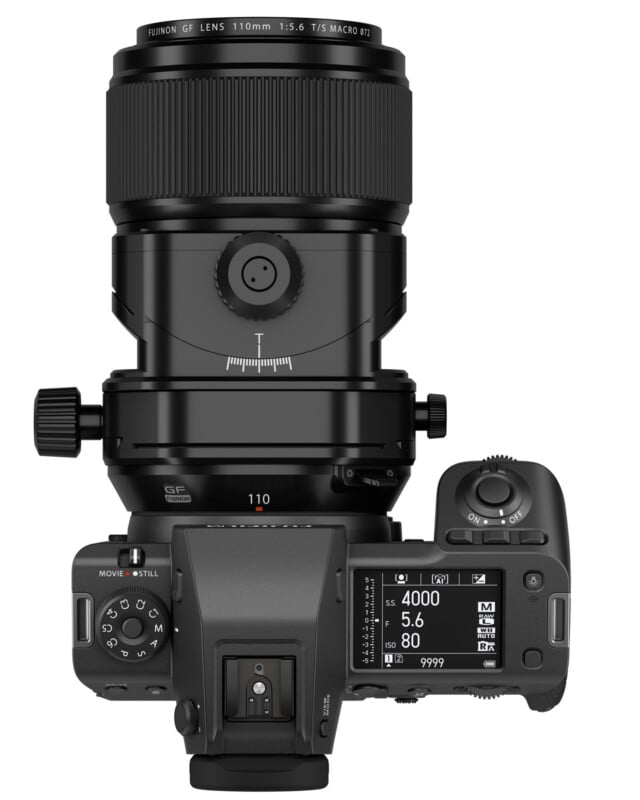
The lens has a 35mm-equivalent focal length of 87mm and a maximum magnification factor of 0.5x, the same as the GF 120mm f/4 R LM OIS WR Macro lens.
The optical formula includes 11 elements across nine groups, including a single aspherical element and two ED elements. Fujifilm explains that the aspherical element controls comatic aberration and field curvature, while the two ED elements minimize axial chromatic aberration. “Furthermore, the lens configuration, with the aperture midway, suppresses distortion and lateral chromatic aberration to achieve edge-to-edge sharpness without relying on electronic correction,” adds Fujifilm.
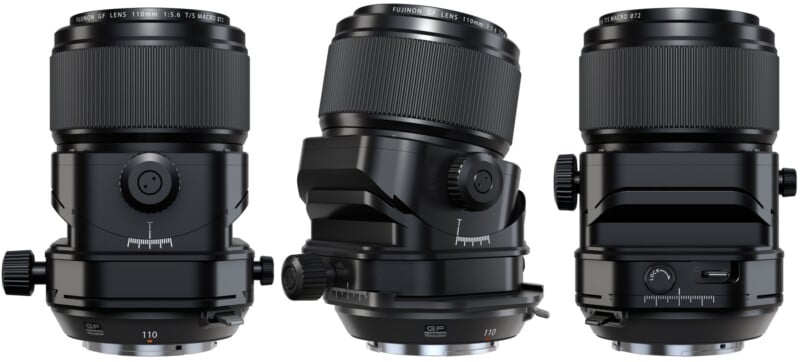
With the lens tilt function, photographers can control the focus plane, allowing for a relatively shallower or deeper depth of field. The latter feature should prove especially valuable in still-life photography.
The lens offers tilt up to plus/minus 10 degrees and shift up to plus/minus 15mm. Like the GF 30mm f/5.6 T/S lens, rotating adjustments can be combined with parallel or perpendicular tilt and shift adjustments. Further, the lens also includes a sensor to measure changes and embed data into image files.
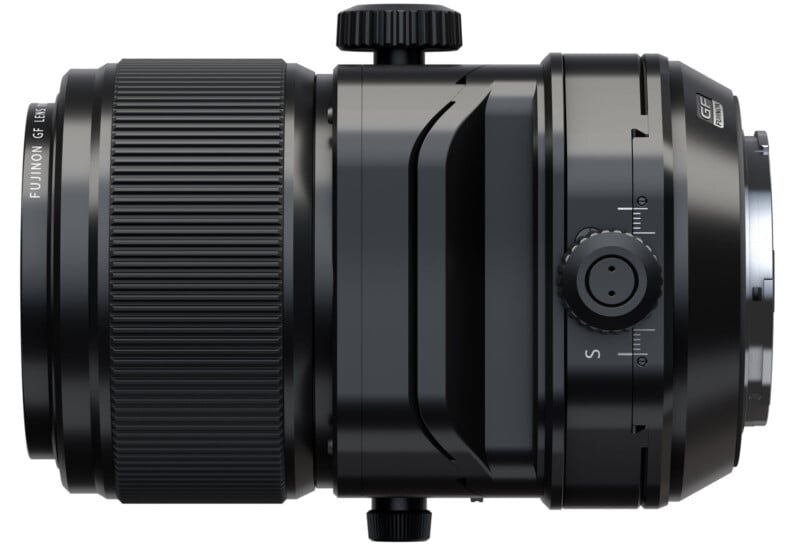
The GF 110mm f/5.6 T/S Macro lens includes a 72mm filter thread. The lens weighs 2.77 pounds (1,255g) and is 5.9 inches (149mm) long. The lens is not internally focusing, meaning that the lens extends during focusing.
The GF 110mm f/5.6 T/S Macro lens will ship by the end of September for $3,500.
Image credits: Fujifilm